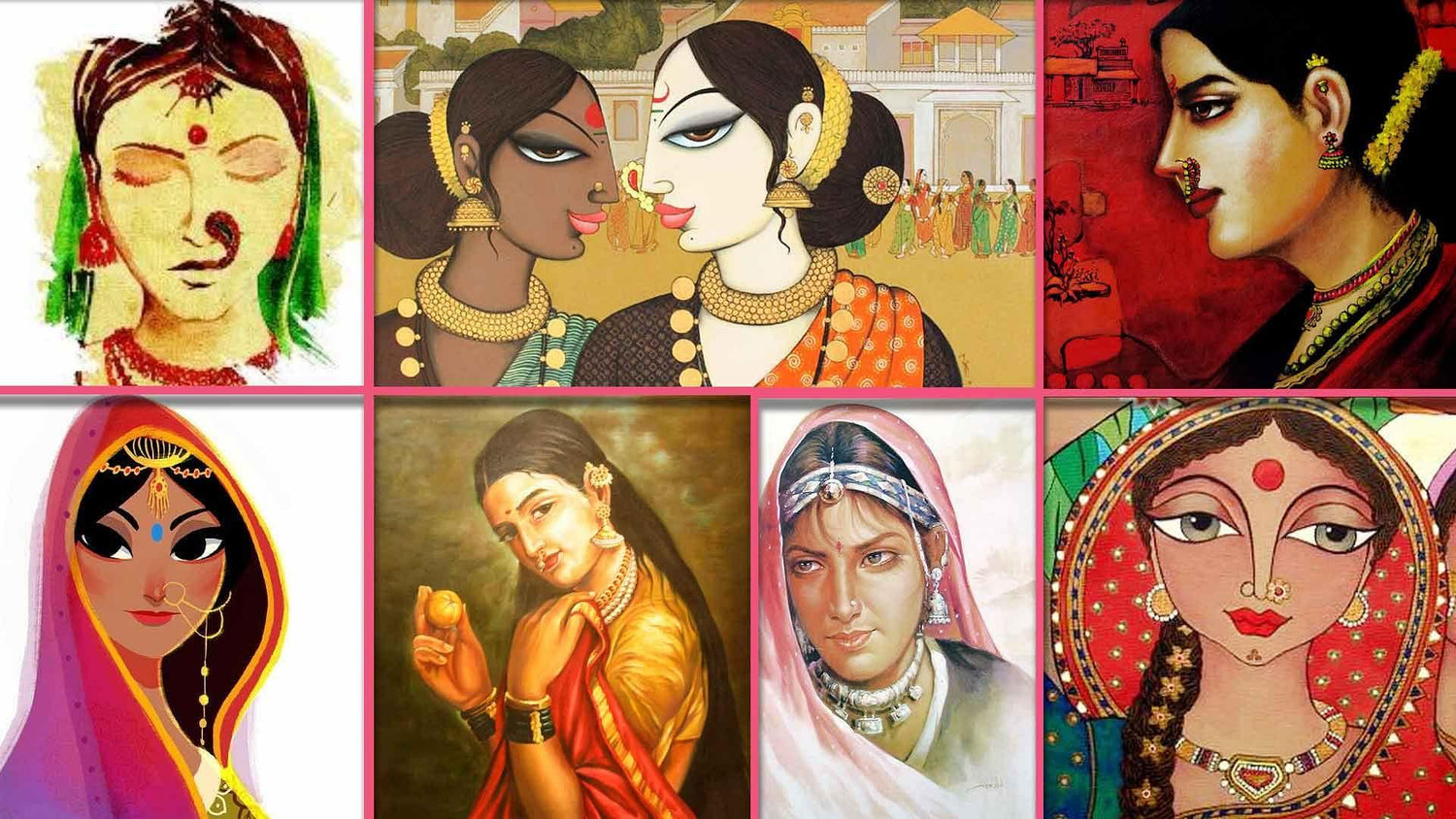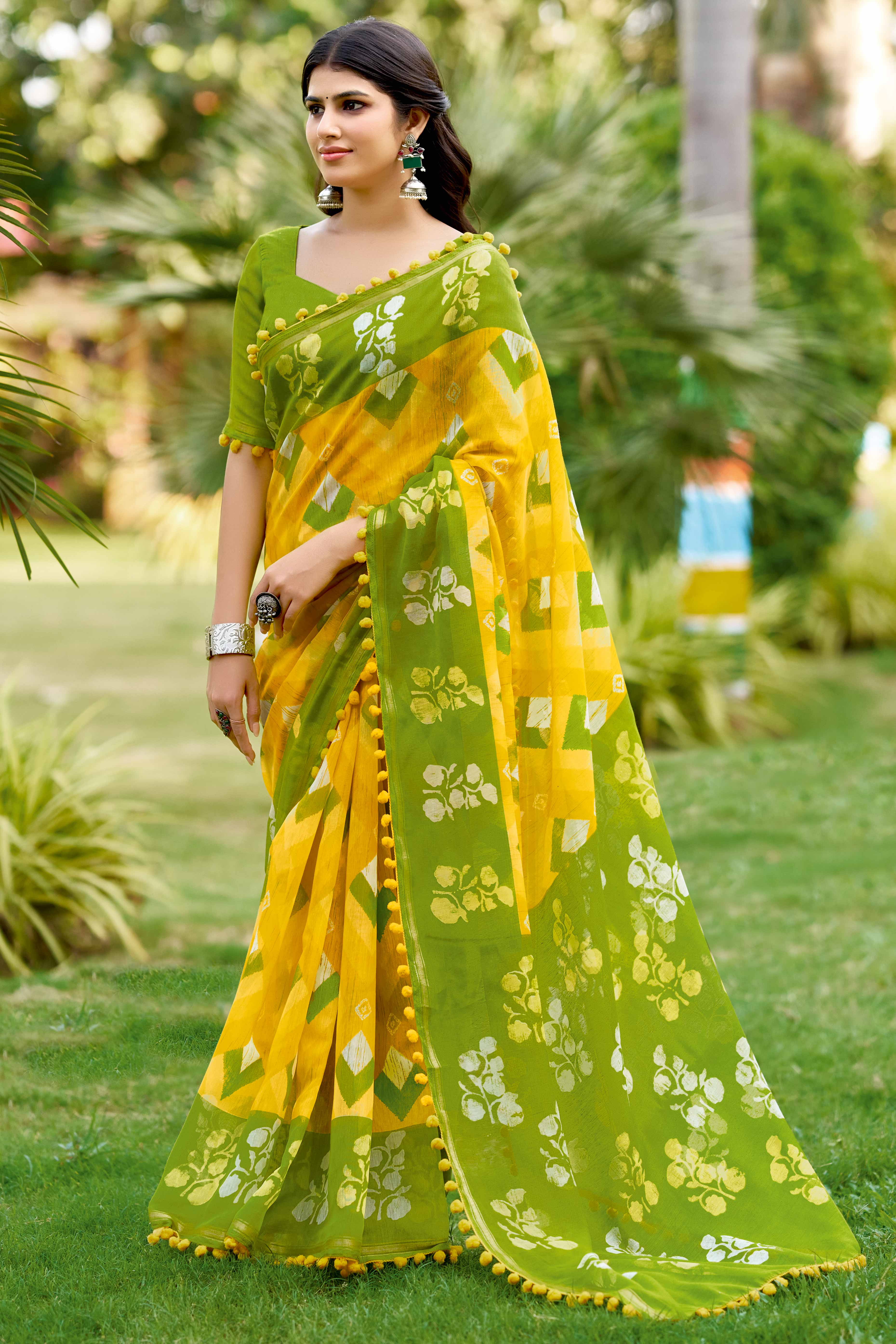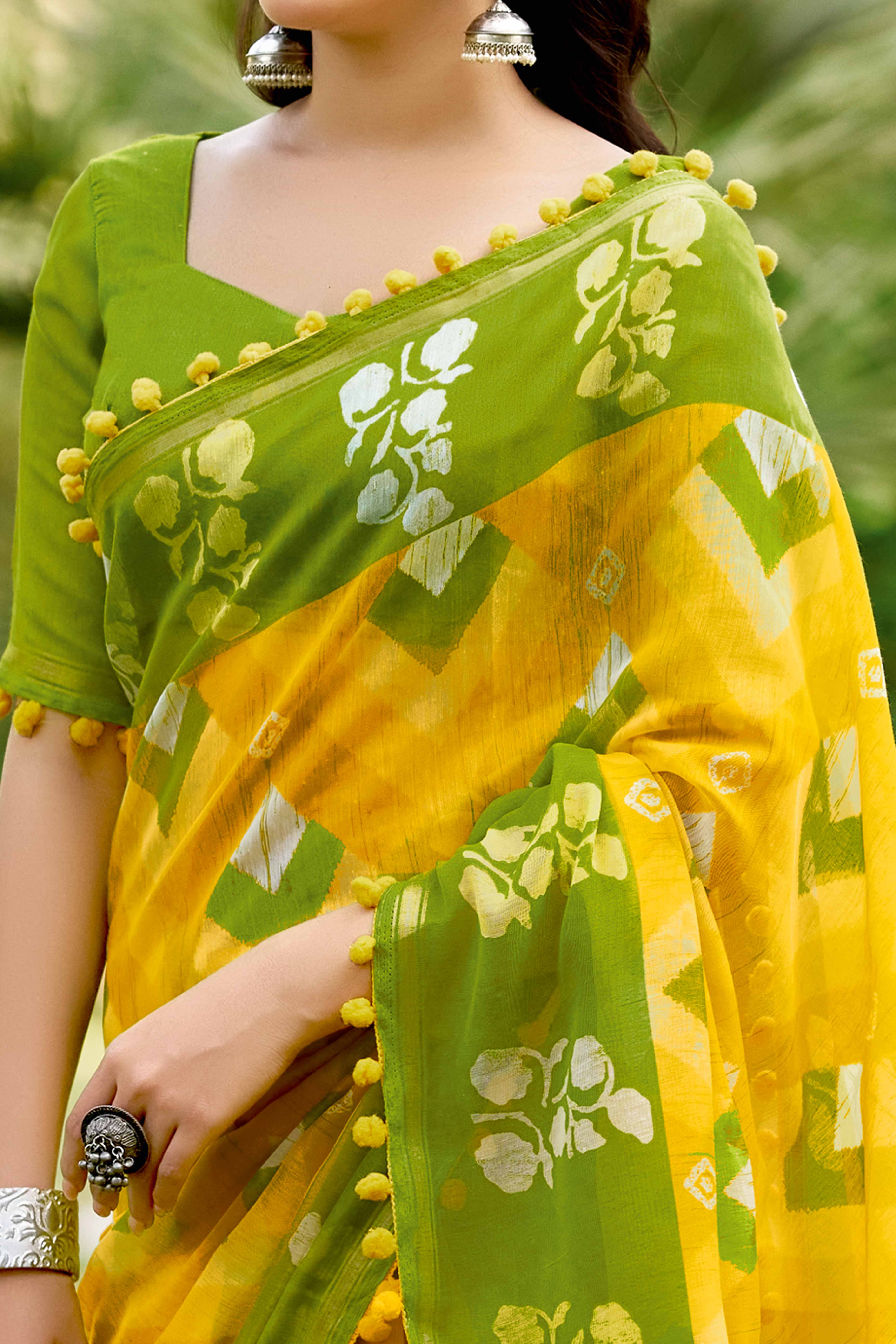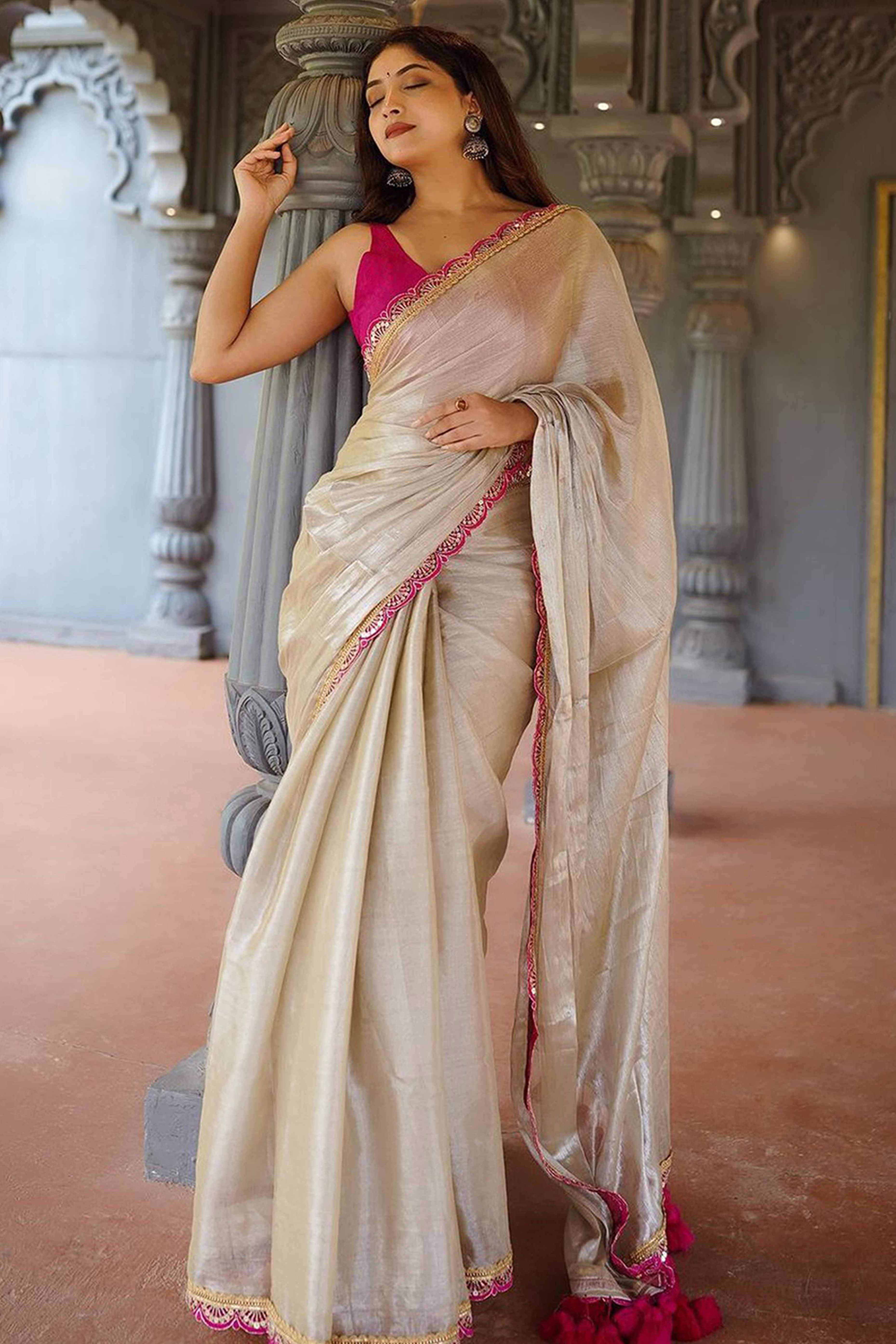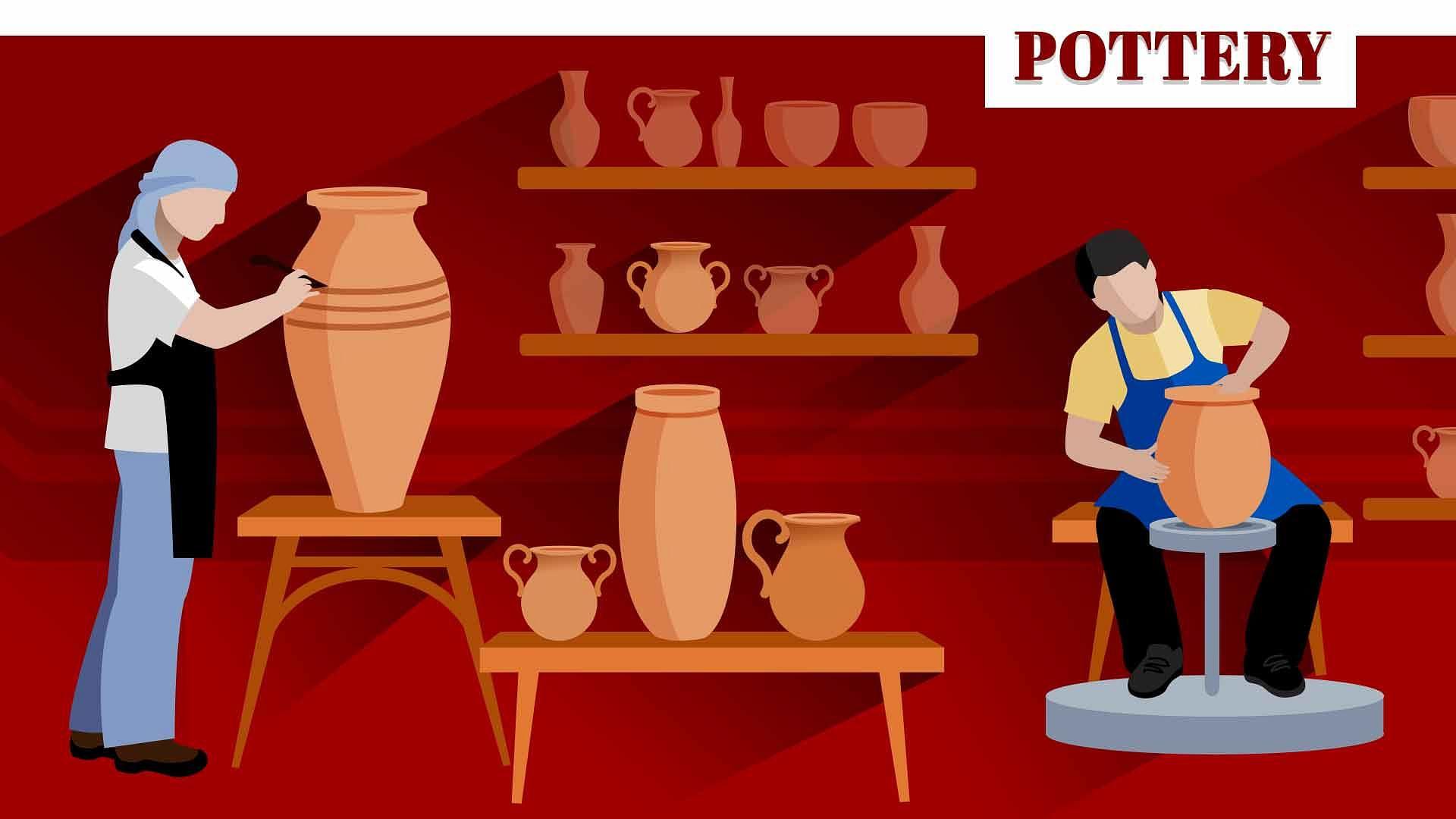The Indian women define sublime beauty with a flair for elegance and panache. Our traditional Indian ornaments go on to augment the exquisiteness and ornateness of the raw, uninhibited beauty that the Indian woman is.
It’s no secret that right since the pre-Independence and through the royal dynasties that the country has seen, India was looked upon for the royalty the Indian women possessed. There are endless tales galore that speak of the unsurmountable beauty of our women and how the many invaders were drawn to India to have one glimpse of that marvel. And it is since that time that the traditional and culturally rich jewellery that adorned the women in those eras still have crept their way even into the modern times. Not only are they regal in every way possible, they are a statement of our abounding heritage.

We have a piece of jewel to deck every part of the body in the most serene and sensuous way. And one such ornament that is native to our vestige is the nath or the nose-ring.
Although there has been a paradigm shift on how beauty is perceive these days, with dusky and darker skin being equally beautiful, these ornaments have never discriminated between the fair and the dark. They’ve flawlessly been the spectacle of grace for any wearer alike.
Such is the versatility of the nath that it sits well on any complexion, face type and features.
The Nath Tale
Although the nath is synonymous with India, some documented evidences show that the nath in fact was brought to the Indian land with the Mughal invasion. If one traces back the sculptures during the Indus Valley Civilisation or the Vedic literature, there is no mention of this jewellery. However, the Mughal era onwards saw the nath gaining quite the popularity.
More than Just An Ornament
The nath is believed to be a symbol of our enriched culture and the celebrated customs many of our Hindu scriptures mention the piercing of nose when the women attain adolescence as a very pious practice.
Nose piercing is also seen as a mark of respect to Goddess Parvati Many regional practices rest their faith in the fact that a married woman sporting the nath would ensure a long, healthy life of her husband- hence the word nath taken after ‘naath’ which means husband. Thus as a tradition then, unmarried women weren’t allowed to wear a nath.

However, with the passing years and modernisation of the society, the nath gradually transitioned into a fashion statement too and took many styles besides the conventional one.
The nath has an Ayurvedic significance too. It is scientifically proven that the piercing of nose on the left side alleviates labor pains and also positively enhances the smooth functioning of the female reproductive organs.
In the bygone eras, the size of the nose ring bore a reflection on the status of the royals and the many riches they were in possession of. If you go through the paintings of the royal women from ancient times, one thing that remains consistent is the huge nathnis.
Nath Through Various Indian States
The nath takes various connotations in the different state wise customs followed.
Punjab
Known as Shikarpuri Nath, the Punjabi Nath is exemplary in terms of beauty and opulence. It is basically a hoop that could vary in size and is invariably attached to a chain that can be pinned to your hair near the earlobe. This can be slightly heavier than other regional naths.
Rajasthan and Gujarat
Women from these regions wear nathnis which are bequeathed by diamonds or gemstones or carved beautifully on gold. Known as Nathuras here, these are beautifully designed. For daily wear, these are small nose rings. On occasions, these are attached to a hoop but are much lighter in their feel.

North India
The norther regions of India have variations to the nath. For most parts, the women wear the nath in the form of a studded ring that has diamond or a gemstone decked on it. This came to be known as Laung due to the similarity it bore with the condiment clove.
Another variation of the nath that is popular in North India is the Latkan. This is basically a combination of a stud and a bracelet like chain that has a pin or a hook to one end that can be clung onto the bun/hair.
Maharashtra
The Maharashtrian nath is known as Gucchedar nath. It is somewhat in the shape of a cashew with pearls and gemstones embedded. Of late, the nath has found a great fondness in the Indian cinema and has become a fashion statement.

Uttarakhand
Known as the Nathuli, these naths are more of family heirlooms and establish the status quo of the families. Usually adorned by ruby and other precious stones, it is clung on to a chain and worn by married women of the Garhwali tribe of the region.
South India
The women of Kerala and Karnataka wear these traditional nose rings called Mukuthi which are in the shape of a swan or a lotus.
The women of Kerala also wear traditional nath called Palakka which is usually bedecked with red stones and has enamouring designs.
In Tamil Nadu, the nath takes the name of Pullaku and is often worn in combination with Mukuthi. The Pullaku is a central nose ring and is often worn as a bridal jewelry.

Bollywood and Nath
The immense popularity of the nath in today’s times has to be attributed to the Bollywood. They are purely instrumental in reviving old trends in a chic way and nath seems to be their favourite muse! They are the most fashionable contemporary accessory.
So whether modern wear is your style or you like to keep it simple, weddings or no weddings, there is a nath style that will always beautifully complement your look.




